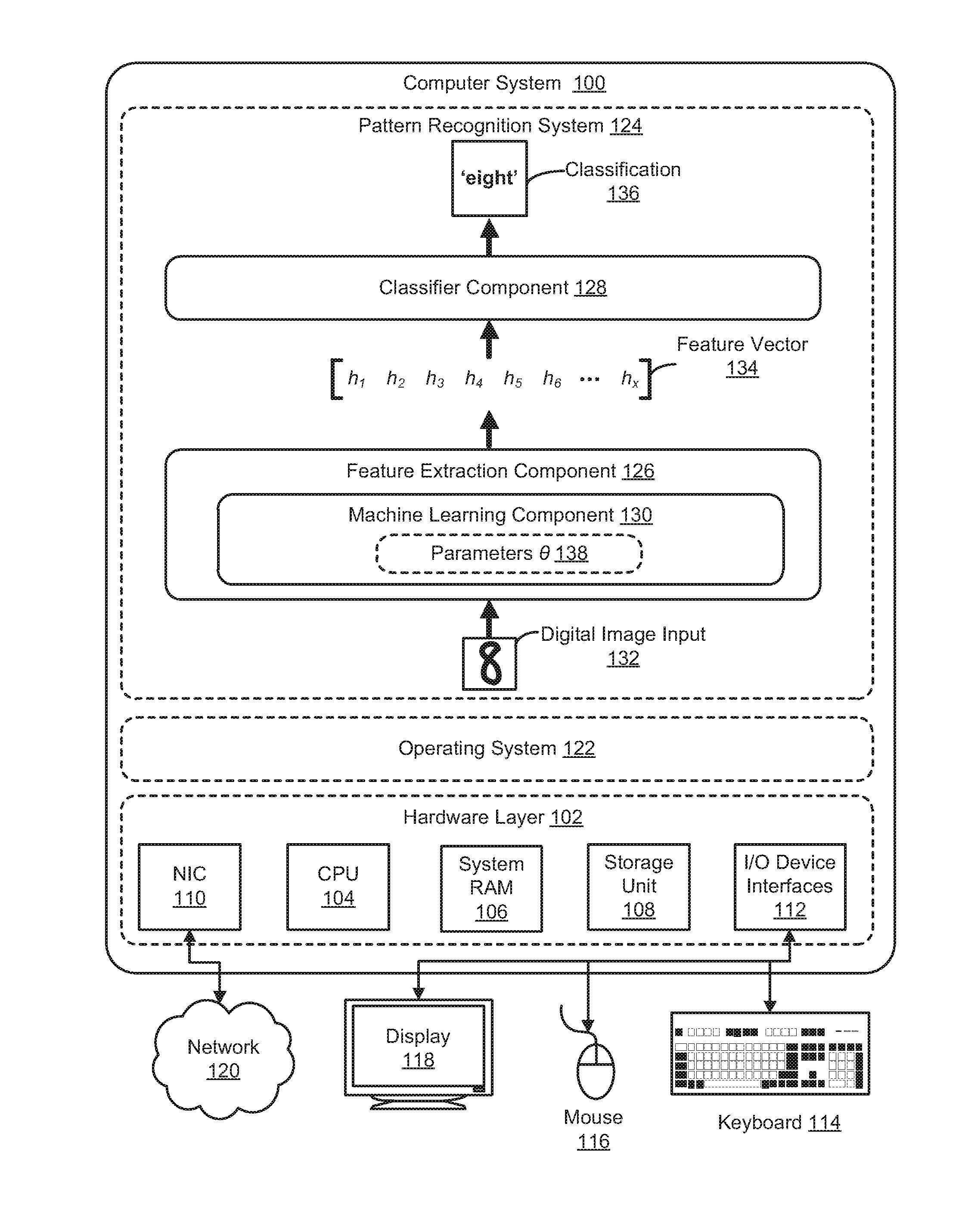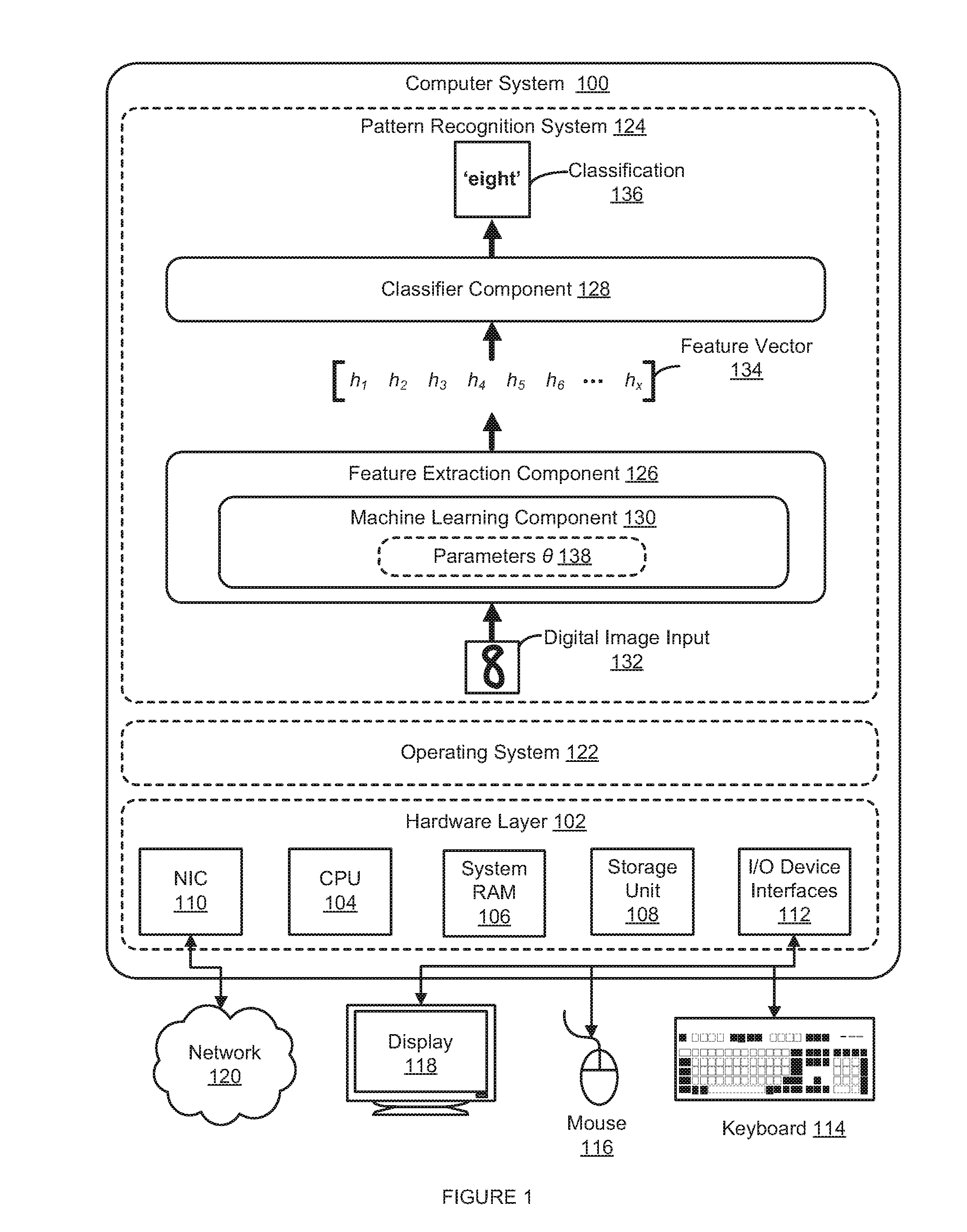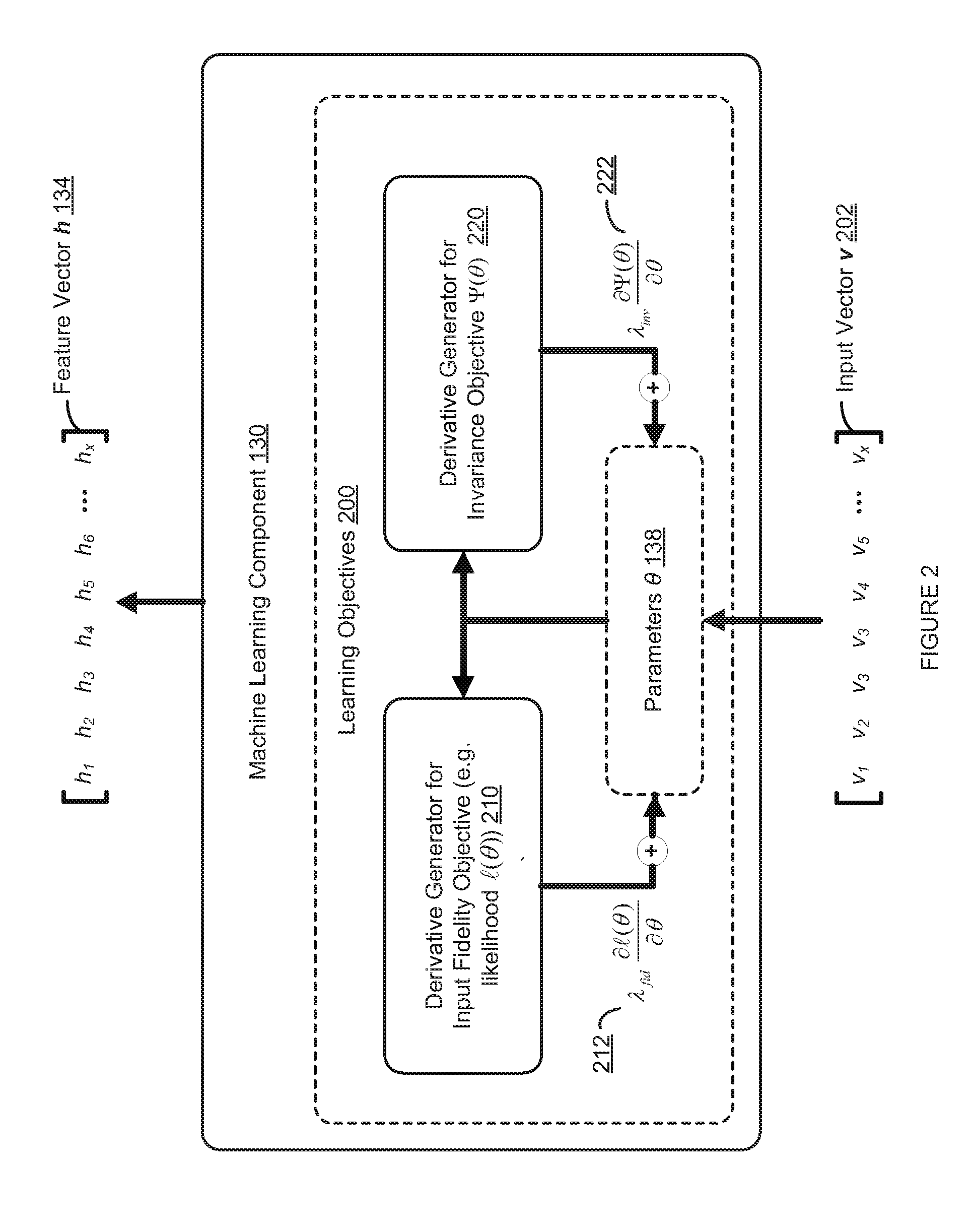Method and System for Invariant Pattern Recognition
- Summary
- Abstract
- Description
- Claims
- Application Information
AI Technical Summary
Benefits of technology
Problems solved by technology
Method used
Image
Examples
Embodiment Construction
[0015]In the following description, numerous specific details are set forth to provide a more thorough understanding of the present invention. However, it will be apparent to one of skill in the art that the present invention may be practiced without one or more of these specific details. In other instances, well-known features have not been described in order to avoid obscuring the present invention.
[0016]FIG. 1 depicts a pattern recognition computer system with a machine learning feature extraction component, according to an embodiment of the invention. Computer system 100 comprises a hardware layer 102 that includes a processor (CPU 104), a system random access memory (RAM) 106, and a storage unit 108, such as a hard drive. Hardware layer 102 further includes a network interface card (NIC) 110 that enables computer system 100 to connect to a network 120 such as the Internet as well as various I / O device interfaces 112 that enable computer system 100 to receive input from a keyboa...
PUM
 Login to View More
Login to View More Abstract
Description
Claims
Application Information
 Login to View More
Login to View More - R&D
- Intellectual Property
- Life Sciences
- Materials
- Tech Scout
- Unparalleled Data Quality
- Higher Quality Content
- 60% Fewer Hallucinations
Browse by: Latest US Patents, China's latest patents, Technical Efficacy Thesaurus, Application Domain, Technology Topic, Popular Technical Reports.
© 2025 PatSnap. All rights reserved.Legal|Privacy policy|Modern Slavery Act Transparency Statement|Sitemap|About US| Contact US: help@patsnap.com



